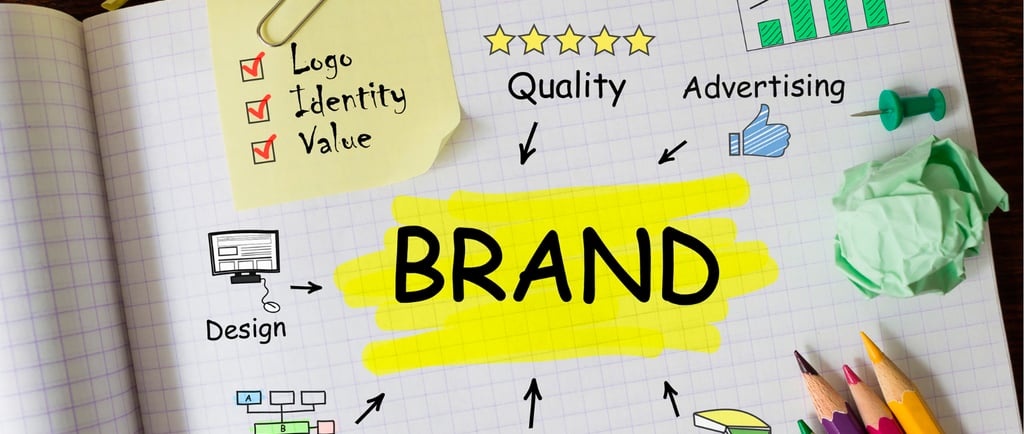How to Create a Brand Identity in 5 Easy Steps
Brand Like a Boss: 5 Easy Steps to Stand Out!
6/13/20244 min read


A brand is only as good as how consumers see it. No matter how excellent your items are or how aggressively low your rates may be, your branding is what will really make you stand out from the competitors. A strong brand identity is essential for long-term success and business growth since it’s the only thing that quickly distinguishes your company from a sea of rivals.
But what if you aren’t familiar with brand identity creation? Don’t worry; this article will clearly outline what you must do and the procedures you must follow.
Why do you need a brand identity? What is it?
Your brand identity consists of much more than just your company name, brand colors, and distinctive logo. They aren’t the sole components, even though they are ultimately a part of your brand identity as a whole.
Simply said, your brand’s visual representation, messaging, and external expression together make up its identity. It’s how your brand seems and feels, as well as how it communicates with the general public. To put it another way, a brand identity is to a firm what a person’s personality is to them.
It could consist of a logo, typeface, colors, a slogan, icons, packaging, and more. In fact, depending on your sector, it may even apply to things like taste. Consider how the red and white Coca-Cola logo stands out among other logos, as well as how the drink tastes different from other brands.
The following reasons make learning how to develop a brand identity essential:
It enhances brand recognition and helps you differentiate yourself.
Your authority in the market is established.
Over time, it assists you in gaining reputation and trust.
It serves as a model for all of your upcoming marketing and advertising initiatives, assisting you in maintaining consistency.
It could consist of a logo, typeface, colors, a slogan, icons, packaging, and more. In fact, depending on your sector, it may even apply to things like taste. Consider how the red and white Coca-Cola logo stands out among other logos, as well as how the drink tastes different from other brands.
The following reasons make learning how to develop a brand identity essential:
It ought to be recognizable. Make sure you immediately grab the audience’s attention and distinguish yourself from your rivals.
In order for customers to immediately recognize the product or other branding components associated with your brand when they see it, it must be memorable and have a strong visual impact.
It ought to be the same on all platforms and media. People may think that your brand is still unsure of who it is and what it stands for if its branding is disjointed.
It need to be expandable. Your brand’s identity has to be recognizable and trustworthy. But it should also be adaptable enough to change and advance with the company.
How may a brand identity be created?
Now that you are aware of the components of a powerful brand identity, let’s explore how to create one from start. The five phases to really developing a brand identity are as follows:
Step 1: Determine your brand’s purpose
Why do you have your brand? What issues does it address? What sets you apart from the competition? It’s imperative that you decide on the primary goal of your brand before you begin the process of developing a brand identity. Your motto, tagline, brand voice, and other elements of your branding strategy will eventually be guided by this.
The major characteristics and advantages that set your brand apart from the competition may be outlined using the brand purpose. What distinguishes you from the competition, and why should clients select you?
Step 2: Research the opposition
To stand out from the competition is one of branding’s primary objectives. And in order to stand out, you must know what you should set yourself apart from. This entails being aware of the competitive environment and the branding tactics used by your rivals. If not, you might easily pass for everyone else who offers the same goods or services that you provide.
Get a sense of how your rivals brand themselves. What personalities do they give their brands? What distinguishing features of the terrain tend to stand out? For instance, you could see that your immediate rivals’ brands have a mix of greens and whites. This may be a great chance for you to stand out by adopting an entirely distinct color palette.
Step 3: Discover who your target market is
While what you want to portray to the public often shapes your brand identity, your target audience’s tastes and expectations should have an equal impact. Targeting your audience should be quite particular, and you should strive to understand what would appeal to them more. What brand language and visual components might appeal to them?
For instance, you may work in B2B but primarily target young, trendy business executives. And you learn from your study that people mostly favor conversational, informal tones over stilted, jargon-filled ones. In light of these insights, you develop your brand’s voice, personality, and visual identity.
Step 4: Create a voice and personality for your brand.
It’s time to establish the distinctive personality and voice you want to associate with your brand based on all the information you’ve acquired so far. This is mostly determined by the goods you’re selling and the demographic you’re aiming for.
For instance, B2B businesses often have a serious tone and a more authoritative, professional brand voice. However, as was already said, if the primary target audience appreciates conversational tones, it might also be warm and enlightening.
Depending on the aforementioned elements, your brand voice may be lighthearted, amiable, and conversational or authoritative, technical, and professional. Your brand personality may be trustworthy, impulsive, approachable, serious, and more. You may pick from a seemingly limitless variety of adjectives as long as it will be appealing to your intended audience.
Step 5: Develop your visual identity
Constructing your business’s visual identity is one of the most important components of constructing a brand identity since graphics make up a significant amount of your total image. Start by turning all of the brand identity ideas you have gathered into graphic concepts.
Select the key terms you want to associate with your brand and make an effort to picture them. For instance, the note-taking program Evernote’s elephant logo was inspired by the proverb “an elephant never forgets.” Thus, it supports the notion that the app is quite trustworthy for keeping your notes and ideas.
The rebel sibling of the legendary R B Advertising Agency, we’ve been rocking the ad game for 25 years — and we’re just getting started! From bold ideas to scroll-stopping campaigns, we don’t just follow trends—we set them. Ready to make your brand unmissable? Let’s turn the spotlight on YOU!
Contact us
subscribe to newsletter
© 2025. All rights reserved.


Abhinav Sankalp, First Floor, Padole Sq, Swavalambi Nagar, Nagpur, Maharashtra 440022
